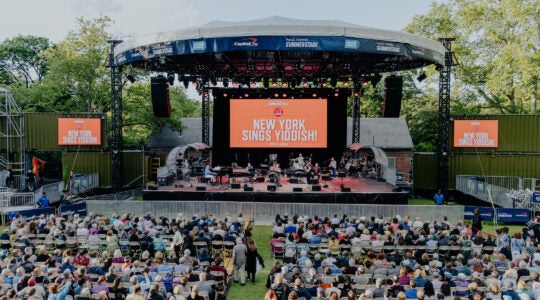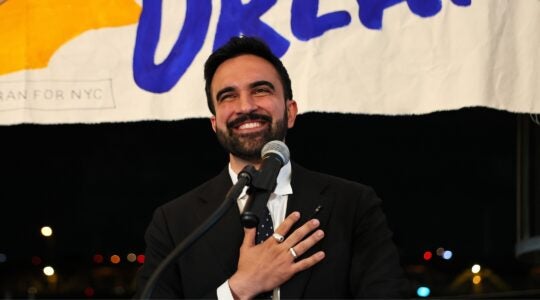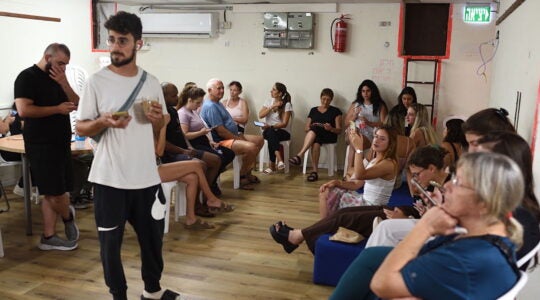With the recent passing of NBA great Jack Twyman, obituaries mentioned the love and care of this white man for his black teammate Maurice Stokes (color mattered in 1958), when Stokes suffered a brain injury and permanent paralysis soon after hitting his head on the court during a game. Until his death in 1970, and without an NBA pension, Stokes survived on charity that was mostly raised by Twyman, who became his legal guardian. And many of the millions raised came from Jews in the Catskills, money raised from an unofficial NBA all-star game, “the Stokes game,” played each summer at Kutsher’s hotel, courtesy of the owner, Milton Kutsher.
Today, that all-star extravaganza could sell out Madison Square Garden, with courtside seats costing thousands of dollars. Instead, beginning in 1959, the game was played on steamy afternoons on an outdoor court, and later in a gym that seated 4,000; so many of them being the hotel’s Jewish guests shuffling out of the dining room and kids bussed in from nearby camps.
Players took the game seriously, as do historians. In John Taylor’s book, “Bill Russell, Wilt Chamberlain, and the Golden Age of Basketball,” Taylor describes Chamberlain, prior to his rookie season, wondering before the Stokes game how he’d measure up against a court full of legends. He did just fine.
One veteran of the game, Oscar Robertson, would help the newer players find their way to Kutsher’s, as most Lakers and Pistons couldn’t be expected to know that you take Route 17 to Exit 105B before turning left on Anawana Lake Road, a two-lane blacktop past Jewish bungalow colonies and smaller hotels.
Chamberlain was one of the few who knew the Catskill roads, having been a bellhop at Kutsher’s while in college. Marty Glickman, then the Knicks’ announcer, recalled first meeting Chamberlain when Glickman and his wife Marge pulled up to the hotel in their convertible, top down. The massive Chamberlain, leaning into the convertible, without opening the doors, gathered up the couple’s luggage with one big swoop. Glickman later said, “I was somewhat embarrassed to tip him, but I did.”
♦
There were few sadder postwar moments for Holocaust survivors than the return to their prewar homes only to have the occupants act as if the returning Jews were complete strangers. How long after you’re forcibly taken from your home can you still think of it as home?
In 1948, some 240 Jews were killed in Gush Etzion, then a cluster of four Jewish communities. After the massacre, the Arab troops advanced four more miles, and where they stopped became the Green Line.
After the Six-Day War, 45 years ago this month, the orphans of Gush Etzion figured they could now go home. Their longing led to what is now seen as the first of the post-1967 settlements. In 1967, however, The New York Times saw this “settlement” not as something new or colonial but a tikkun, a fixing, a return, headlining: “Israelis Return To Village Overrun 20 Years Ago.” It is almost quaint to see a settlement called a “village,” though that’s the proper translation of “Kfar” Etzion, a village within the Gush. The settlers, explained the Times, were “children of the original settlers,” the orphans of ’48.
Over the decades, the Gush has only grown, in that land of so many disputed claims. Perhaps you’d like to see a boycott economically destroy the Gush, or perhaps you wish them well. Whatever the modern debate, history has a story all its own: That this great international quandary began with the survivors and orphans of ’48 simply wanting to go home to the village where they last saw their parents, a village four miles east of what we now call the Green Line.
♦
This week, Israel, as a “gesture,” returned the bodies of 91 suicide bombers and terrorists to the Palestinian Authority, who will bury the killers with full military honors, with the moderate Mahmoud Abbas hosting a presidential reception for their families. Among the 91 is the bomber who in 1995 killed Alisa Flatow, forever 20 years old, though she ought to be 37. Will anyone make a gesture to her family, to her delicate soul, to what was lost? After the bombing, her father identified Alisa by her bare feet, as only a father could do, forever illuminating that verse in the Song of Songs, “How beautiful are thy feet in shoes.”
E-mail: jonathan@jewishweek.org
The New York Jewish Week brings you the stories behind the headlines, keeping you connected to Jewish life in New York. Help sustain the reporting you trust by donating today.




